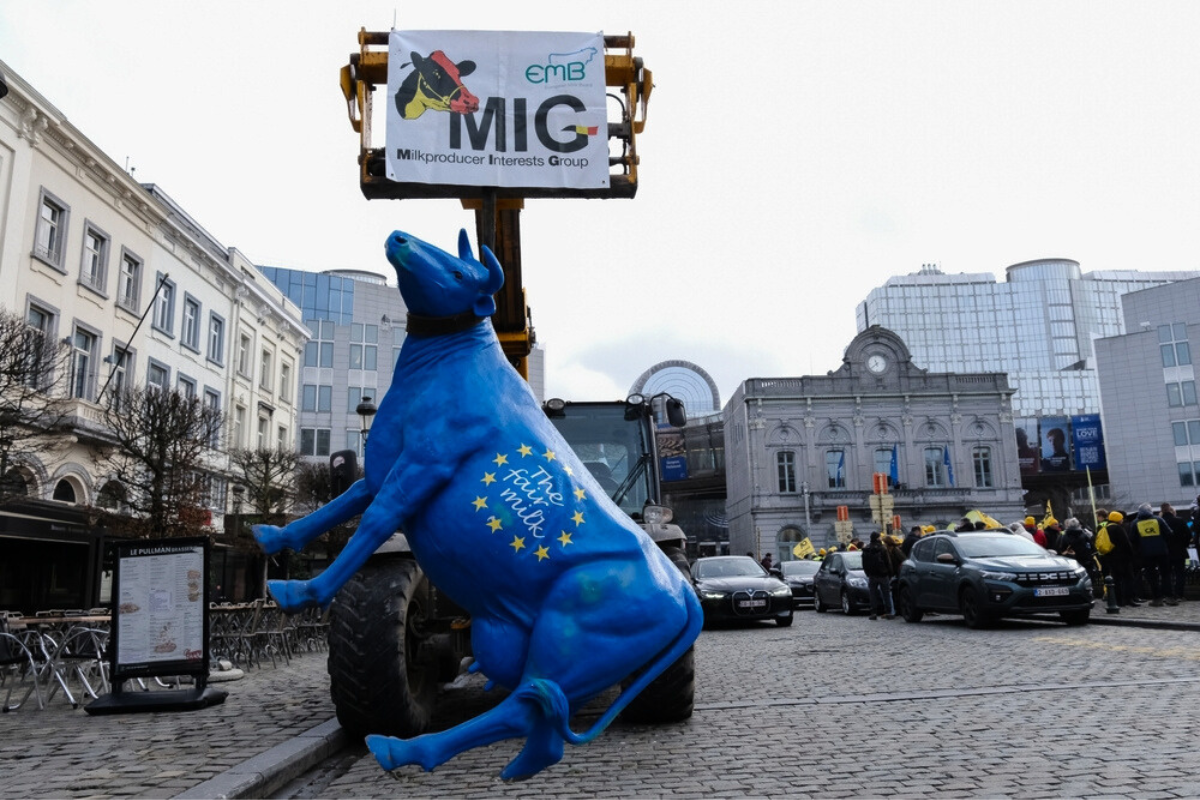
Happy Sunday! Welcome to the very first issue of the Brazil Society newsletter, brought to you by The Brazilian Report. Every week, we’ll go into detail on a crucial issue affecting social dynamics in the country.
If you have any questions about this newsletter or topics you’d like to see covered in future issues, send us an email at [email protected]
Notice: You may have noticed some changes at The Brazilian Report. We are now offering seven newsletters each week: covering Latin American affairs, Brazilian politics, the economy, society, sports, climate issues, and agribusiness. To tailor your reading experience, you can manage your preferences in your subscriber profile. Here’s how:

Rio's Christ the Redeemer enters the spotlight this holiday season

The Christ the Redeemer statue, in Rio de Janeiro, generates a total of BRL 1.46 billion in tourism revenue annually. Photo: Piotr Piatrouski/Shutterstock
Rising majestically above Rio de Janeiro, Christ the Redeemer stands as an emblem of faith and beauty. Perched atop Corcovado Mountain, 750 meters (2,460 feet) above sea level, the Art Deco statue commands sweeping views of the city's iconic skyline: the shimmering Rodrigo de Freitas Lagoon, the verdant Tijuca Forest, and the golden curves of Rio’s beaches.
Declared one of the Seven Wonders of the Modern World, the monument attracts millions of visitors annually. This holiday season, however, it finds itself at the center of an unusual spotlight.
A newly inaugurated trail up to Christ the Redeemer offers visitors a fresh perspective on the city’s natural beauty, featuring a lookout point with panoramic views of Rio’s South Zone beaches and the lagoon. Meanwhile, federal environmental agencies have announced an annual investment of BRL 25 million (approximately USD 4.1 million) through 2027 to revitalize Christ the Redeemer and other key sites within Tijuca National Park.
Renovations include structural upgrades and accessibility enhancements, such as a new ramp to the statue’s highest plateau, currently accessible only via escalator.
But these improvements also come amid a contentious debate over who should control the monument.
The struggle for control
A bill currently under discussion in Brazil’s Senate proposes excluding the Alto Corcovado area, where the statue is located, from the national park’s boundaries and transferring control to the Archdiocese of Rio de Janeiro. The Catholic Church, which already administers the statue and its sanctuary, argues that the current federal management introduces unnecessary bureaucratic hurdles and has failed to maintain essential infrastructure.
Leading this push are senators from the far-right Liberal Party (PL), including one of former President Jair Bolsonaro’s sons. At the same time, a similar proposal backed by a member of President Luiz Inácio Lula da Silva’s Workers’ Party (PT) has emerged in the House.
At the heart of the matter is the complex relationship between the Catholic Church and the federal government. The national park is managed by ICMBio, a federal agency tasked with safeguarding Brazil’s biodiversity.
The church oversees a sanctuary and the statue’s illumination, earning a share of ticket sales and additional revenue from hosting events, advertising and special illumination campaigns, when Christ is lit up in a certain way at night to support a given cause. Citing its role in the statue’s creation, the archdiocese contends that it deserves broader authority over the surrounding area.
A monumental legacy
The story of Christ the Redeemer traces back to 1859, when French priest Pierre-Marie Bos proposed building a grand statue of Jesus Christ atop Rio de Janeiro’s highest point. While the idea was initially dismissed, it was revived decades later, culminating in the statue’s inauguration in 1931 under President Getúlio Vargas.
Funded through church-led campaigns, the monument symbolized modernity and strengthened ties between the government and the church.
Today, the statue’s economic impact is undeniable. According to a recent study by think tank Fundação Getulio Vargas, Christ the Redeemer generates a total of BRL 1.462 billion annually, supporting over 21,000 direct and indirect jobs.

Construction of the Christ the Redeemer statue in 1931. Photo: IMS
Preservation v. expansion
Critics of the church’s expanded role argue it lacks the expertise to manage both the natural environment and the influx of visitors. The Tijuca National Park Advisory Board has voiced concerns about the church’s proposal to extend visiting hours, warning that increased foot traffic could disturb the surrounding neighborhood of Cosme Velho and the local ecosystem. Last year, Christ the Redeemer welcomed an average of 6,000 visitors daily.
The debate reflects broader trends in Rio, where tourism has rebounded post-pandemic. Tijuca Forest, which includes Corcovado, attracted 4.4 million visitors this year, making it Brazil's second most visited federal conservation unit. Yet challenges persist, underscored by the recent shooting of an Argentine tourist who inadvertently entered a high-crime area while traveling to Corcovado.
Christ the Redeemer embodies the dualities of Rio de Janeiro: its unparalleled natural and cultural heritage juxtaposed with its enduring social challenges. Or its society’s religious traditions and the Republic’s secular state.
For now, the statue continues to captivate the world, its open arms embracing a city as complex as it is breathtaking.
Other stories we’re following
🎬 This week, the Brazilian film “I'm Still Here” was nominated at the Golden Globes (Best Non-English Picture and Best Female Actor in a Drama) and the Critics Choice Awards. The film is also vying for several Oscar nominations, including Best International Feature.
🚗 The Supreme Court held a public hearing this week to discuss whether drivers on ride-hailing apps should be considered formal employees — a topic that has generated divergent discussions in the country's courts.
🪖 A fresh survey shows that 51 percent of Brazilians believe former President Jair Bolsonaro and military officers attempted a coup against President Lula. However, 46 percent did not know about a recent police operation that revealed that those plans included the murder of the current president, his VP and a Supreme Court justice.









